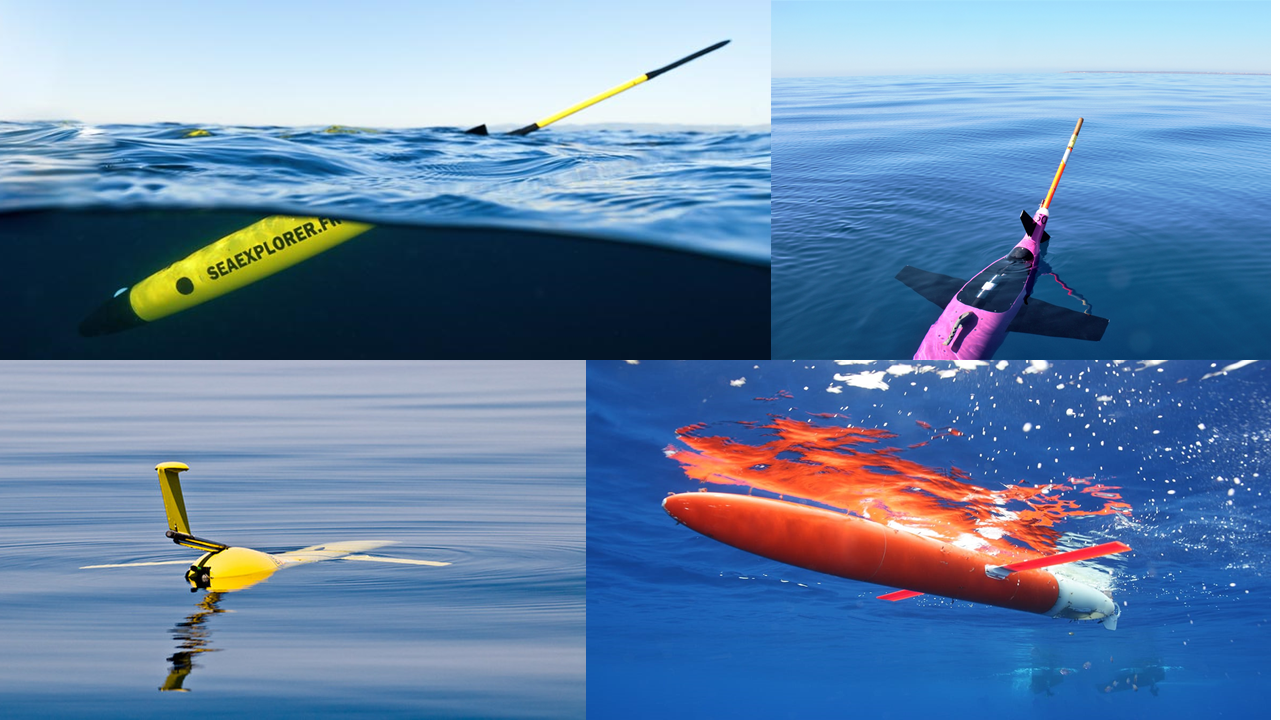OceanGliders in brief
Gliders are autonomous underwater vehicles that perform saw-tooth trajectories from the surface to depths of 1000m, along programmable routes. They move up(down)ward thanks to a buoyancy engine and they achieve forward speeds of up to 40 km/day thanks to wings and rudders. They can be operated for months and over thousands of km before they have to be recovered. Gliders record Essential Oceanic Variables (physical and biogeochemical) at high resolution during the dives and transmit these data in near real time to land via satellite when at surface (every few hours). First conceived in the late 1980s, gliders are now incorporated into the operational technology portfolios of many research institutions and agencies and used routinely for both process studies in marine sciences and long-term ocean observations.

The OceanGliders program started in September 2016 to support active coordination and enhancement of the worldwide glider activity. OceanGliders contributes to the present international efforts for Ocean Observation for Climate, Ocean Health and Real Time Services. It brings together marine scientists and engineers deploying gliders all over the world to: (1) observe the long-term physical, biogeochemical, and biological ocean processes and phenomena that are relevant for societal applications; and, (2) contribute to the GOOS through real-time and delayed mode data dissemination.
OceanGliders is distributed in several national and regional observing systems in which glider observations significantly contribute to integrated, multi-scale and multi-platform sampling strategies. OceanGliders shares best practices, requirements, efforts and scientific knowledge needed for glider operations, data collection and analysis. It also monitors global glider activity and supports the dissemination of glider data in regional and global databases, in real-time and delayed modes, and facilitates data access to wider communities. OceanGliders currently supports global, national and regional initiatives to expand the capabilities and application of the platforms to challenges such as improved measurement of ocean boundary currents, water transformation and storms.
Links:
– more on the Global Ocean Observing System (GOOS)
– more on the glider community and the EGO network